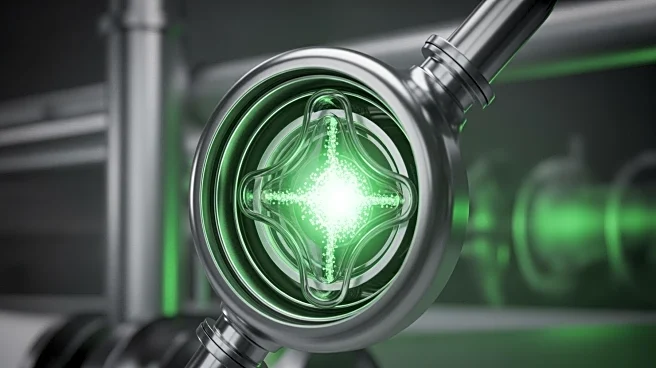What's Happening?
A collaboration between US startup Plug Power, Dutch firm VSParticle, and the University of Delaware has led to a breakthrough in reducing the cost of green hydrogen production. The team developed a new
catalyst that uses 90% less iridium, a rare and expensive metal, compared to standard catalysts. This innovation involves a dry deposition process that enhances efficiency and reduces reliance on iridium, making green hydrogen production more economically viable. The new catalyst aims to achieve a cost of $1.00 per kilogram for green hydrogen, potentially undercutting the average cost of fossil-sourced hydrogen.
Why It's Important?
This development is crucial for the green hydrogen industry, as it addresses one of the major economic and supply chain challenges—reducing the dependency on iridium. By lowering production costs, the new catalyst could accelerate the adoption of green hydrogen as a sustainable energy source, contributing to the reduction of carbon emissions associated with traditional hydrogen production methods. The innovation supports the transition to renewable energy sources and aligns with global efforts to combat climate change. It also positions the collaborating companies as leaders in the green hydrogen market, potentially influencing industry standards and practices.
What's Next?
VSParticle plans to develop in-house manufacturing capacity to supply the new catalyst for pilot and early-stage commercial projects. Several projects are already scheduled to begin next year, with interest from top-tier PEM electrolyzer manufacturers. The success of these initiatives could lead to widespread adoption of the new catalyst, further reducing costs and increasing the competitiveness of green hydrogen. As the technology matures, it may attract more investment and partnerships, driving innovation and expansion in the green hydrogen sector.
Beyond the Headlines
The reduction in iridium usage not only lowers costs but also addresses environmental concerns associated with mining and processing rare metals. The dry deposition method eliminates the need for PFAS-based polymers, which are known for their environmental persistence. This innovation reflects a broader trend towards sustainable manufacturing practices and highlights the importance of interdisciplinary collaboration in advancing clean energy technologies. As the green hydrogen industry evolves, ethical considerations regarding resource extraction and environmental impact will become increasingly important.













